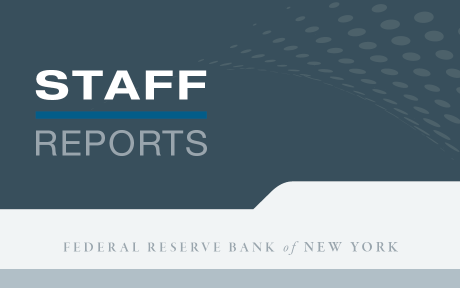Economics
How Much Can the Fed’s Tightening Contract Global Economic Activity?
What types of foreign firms are most affected when the Federal Reserve raises its policy rate? Recent empirical research used cross-country firm level…


What types of foreign firms are most affected when the Federal Reserve raises its policy rate? Recent empirical research used cross-country firm level data and information on input-output linkages and finds that the impact on sales and investment spending is largest in sectors with exposure to trade in intermediate goods. The research also finds that financial factors drive differences, with U.S. monetary policy spillovers having a much smaller impact on firms that are less financially constrained.
The Global Monetary Tightening Cycle
The Fed and other monetary authorities have embarked on a tightening that has taken interest rates to their highest level since before the Great Recession. The speed and magnitude of rate hikes have provoked speculation that this tightening could end up being more restrictive than needed to bring inflation back to targets, and thus could lead to a greater reduction in economic activity than necessary. In particular, it has been argued that the historic interconnectivity of the global economy amplifies the contractionary impact of monetary tightening—an amplification that central bankers are failing to factor into their rate decisions.
Recent work helps shed light on this debate by assessing the effect of U.S. monetary policy on foreign firms. Using cross-country firm-level data for 1995—2019, this research examines how U.S. monetary policy shapes global firms’ sales and investment spending. The richness of the sample enables the authors to explore not merely the impact of these shocks on the average foreign firm, but also how country- and firm-specific characteristics intensify or dampen this impact. In addition, they use information on country-sector input-output linkages from the World Input-Output Database (WIOD) to determine how exposure to globalization via trade connectivity plays into international transmission of U.S. monetary policy.
U.S. Monetary Tightening Curbs Foreign Firms’ Sales and Investment Spending
The authors employ a panel regression model to identify and quantify the international transmission of Federal Reserve policy to foreign firms. In order to measure the spillover specifically from U.S. policy, they first control for local factors using macroeconomic indicators (including domestic real GDP growth, short-term interest rates, exchange rate fluctuations, and financial market volatility), and firm characteristics (including size, net worth, and the change in cash flows). To measure changes in U.S. monetary policy, they use a constructed monetary policy shock variable that isolates the “surprise” component of a Fed policy rate change.
The baseline model identifies a large and statistically significant negative impact of a U.S. monetary policy tightening on investment and sales for the average foreign firm. In particular, a 100-basis point monetary tightening in a given year lowers the ratio of investment spending to fixed assets in the subsequent year by an amount equivalent to the sample average of the annual change in this ratio observed in the data. As for sales, the authors follow the literature and measure the impact on sales relative to the level of a firm’s fixed assets. Here, a 100-basis point tightening lowers the sales to fixed assets ratio by an amount (in absolute value) nearly three times the magnitude of the median increase in the sales ratio observed in the data sample.
Splitting the sample into industrial economies and emerging market economies (EMEs), the authors find that the estimated negative effect of a U.S. monetary policy on sales and investment is stronger in emerging market economies than foreign industrial economies, where a 100-basis point U.S. monetary policy tightening has roughly 20 (50) percent higher impact on the average foreign firm’s investment (sales) in EMEs.
A More Globalized World Amplifies Spillovers
To explore the baseline results further, the authors test for a few competing channels through which U.S. monetary policy shocks are transmitted to foreign firms. First, they investigate whether exposure to the globalization forces—specifically, trade exposure and integration in global value chains (GVC)—can impact the extent to which a foreign firm is affected by U.S. monetary policy. The analysis finds firms with a higher ratio of exports to total output curb investment spending more in response to a tightening than similar firms with lower such ratios. Intriguingly, when these total export ratios are separated into final and intermediate exports ratios, it is only intermediate goods trade that significantly amplifies the impact of a tightening. The key result is that integration in the GVC amplifies the impact of a tightening on foreign firms’ real outcomes.
The results for intermediate exports and a network-based measure of GVC importance hold whether one considers overall trade or bilateral trade with the U.S. only, showing that it is not merely specific exposure to the U.S. demand that amplifies the effect of a U.S. tightening, but also exposure to the fluctuations in global demand stemming from this tightening. The trade exposure regression results are economically significant: Moving from the bottom to the top quartile of global intermediate exports exposure implies that more exposed firms’ subsequent year’s investment share falls by about 25 percent more relative to the average firm in response to a 100-basis point U.S. monetary policy tightening.
Less Financially Constrained are (Partially) Insulated
The authors next investigate the effect of a firm’s financial conditions and find that the contractionary effect of U.S. monetary policy on foreign investment spending is smaller for firms that are less financially constrained, a result that is robust across several proxies for financial constraints. The authors quantify the degree to which the effects of U.S. monetary policy shocks are attenuated by moving across the size-distribution of firms from smaller to larger, with size here used as a proxy for how financially constrained a firm is. In general, the effect of U.S. monetary policy is significantly smaller for large firms. For example, a firm in the upper decile of the firm-size distribution suffers half the impact of such a tightening as the average firm. A key finding, then, is that large firms that are heavily involved in the trade of intermediate goods are fairly sheltered from shifts to tighter U.S. monetary policy.
Julian di Giovanni is the head of Climate Risk Studies in the Federal Reserve Bank of New York’s Research and Statistics Group.

Neel Lahiri is a research analyst in the Federal Reserve Bank of New York’s Research and Statistics Group.
How to cite this post:
Julian di Giovanni and Neel Lahiri, “How Much Can the Fed’s Tightening Contract Global Economic Activity?,” Federal Reserve Bank of New York Liberty Street Economics, February 13, 2023, https://libertystreeteconomics.newyorkfed.org/2023/02/how-much-can-the-feds-tightening-contract-global-economic-activity/.
Disclaimer
The views expressed in this post are those of the author(s) and do not necessarily reflect the position of the Federal Reserve Bank of New York or the Federal Reserve System. Any errors or omissions are the responsibility of the author(s).
inflation
monetary
reserve
policy
interest rates
fed
monetary policy

Argentina Is One of the Most Regulated Countries in the World
In the coming days and weeks, we can expect further, far‐reaching reform proposals that will go through the Argentine congress.
Crypto, Crude, & Crap Stocks Rally As Yield Curve Steepens, Rate-Cut Hopes Soar
Crypto, Crude, & Crap Stocks Rally As Yield Curve Steepens, Rate-Cut Hopes Soar
A weird week of macro data – strong jobless claims but…
Fed Pivot: A Blend of Confidence and Folly
Fed Pivot: Charting a New Course in Economic Strategy Dec 22, 2023 Introduction In the dynamic world of economics, the Federal Reserve, the central bank…






















